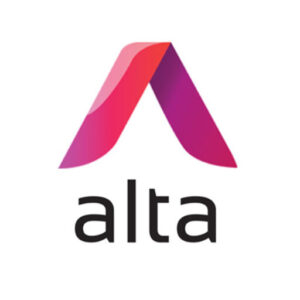The gender pay gap increased marginally year on year from 7.6 per cent in 2022 to 7.7 per cent in 2023, according to the latest ONS statistics.
But the gender pay gap for full-time employees aged 40 and over is “much higher” than for employees aged below 40, which experts warned signalled persistent systemic challenges for women in the workforce.
While for workers under 40 the gender pay gap for full-time employees stood at 4.7 per cent or below, for those aged 40 to 49 years and older, it was 10.3 per cent or higher.
Mary-Ann Stephenson, director of the Women’s Budget Group, told People Management women “continue to face persistent challenges in achieving pay equality”.
Looking at the data by age was “particularly interesting”, she said, as it showed the gender pay gap was the result of “cascading economic and social factors that reduce women’s earning capacity across their lifetime”.
While the gender pay gap widens following childbirth – which Stephenson dubbed “the motherhood pay penalty” – because of women transitioning into lower-paid roles or working part time to balance family responsibilities, the pay gap cannot be attributed to this alone.
“Women in this age group often find themselves in the ‘sandwich generation’, responsible for both childcare and caring for other family members, in addition to dealing with their own health issues,” she said.
“These factors may lead to them seeking work on reduced hours, which can result in reduced earnings and contribute to the widening gender pay gap that we’re seeing.
“This is why it’s important to recognise that addressing the gender pay gap extends beyond mere wage equality. At its core, the gender pay gap results from the unequal distribution and undervaluation of care work performed by women, which is the very work that keeps our economy running.”
The gender pay gap for full-time employees aged 60 and over is currently the highest of all age groups. Between 2022 and 2023, the gender pay gap for this group increased from 13.5 per cent to 14.2 per cent.
The largest increase in the gender pay gap was seen among employees aged 30 to 39 years, where it more than doubled from 2.3 per cent to 4.7 per cent.
The statistics show that fewer women in their 40s and 50s were in occupations such as managers, directors and senior officials, at an age when pay for these occupations typically increases. “This is important because not only is the average pay in that occupation nearly 20 per cent higher for employees aged 40 to 49 years than it is for employees aged 30 to 39 years, but the proportion of women also decreases,” the ONS said.
The proportion of women in the higher-paid professional, associate professional, and managers, directors and senior officials groups remained below 50 per cent for all age groups.
Jill Miller, senior diversity and Inclusion adviser at the CIPD, said a lack of flexible working options can be “a significant barrier” to career progression for women, who are more likely to be juggling childcare and other caring responsibilities with work.
Employers must think “more creatively” about how, when and where people work to attract and retain a more diverse range of people, enabling them to develop and progress. “In addition, look at whether the organisation’s culture supports working parents and carers to have choice over caring responsibilities,” said Miller.
Jemima Olchawski, chief executive of the Fawcett Society, noted that the gender pay gap hits Black and minority women the hardest. “The gender pay gap must be closed and we need urgent and effective action from employers and government. Employers must stop asking discriminatory salary history questions and we need mandatory ethnicity pay gap reporting,” she said.
“A lack of genuinely flexible, quality work traps women in roles below their capabilities and encourages the notion that flexible work is a privilege, not an essential part of a modern economy. This is a big reason we have a persistent gender pay gap that harms women and our economy.”
Kerri Constable, associate director for employer services at RSM UK, said women who were able or willing to “put in unpredictable long hours” may be able to access pay rises “compared to those who choose to be ‘on call’ for parental duties [who] end up paying a career penalty”.
The ONS stats further found that, overall, pay has fallen in real terms despite widespread pay increases to meet the cost of living crisis. In April 2023, median weekly earnings for full-time employees fell by 1.5 per cent on the year in real terms, once adjusted for inflation using the Consumer Prices Index.
“The latest figures on pay make sobering reading. Employees, particularly those at the lower end of the labour market, are struggling to make ends meet with below inflation pay rises,” said Dan Lucy, director of HR research and consulting at the Institute for Employment Studies.
“At the same time, employers are struggling to meet pay demands in a difficult economic climate while also facing labour and skills shortages. There is room here to think differently and meet both employer and employee needs.”
More information can be found by reading the CIPD’s gender pay gap reporting guide




